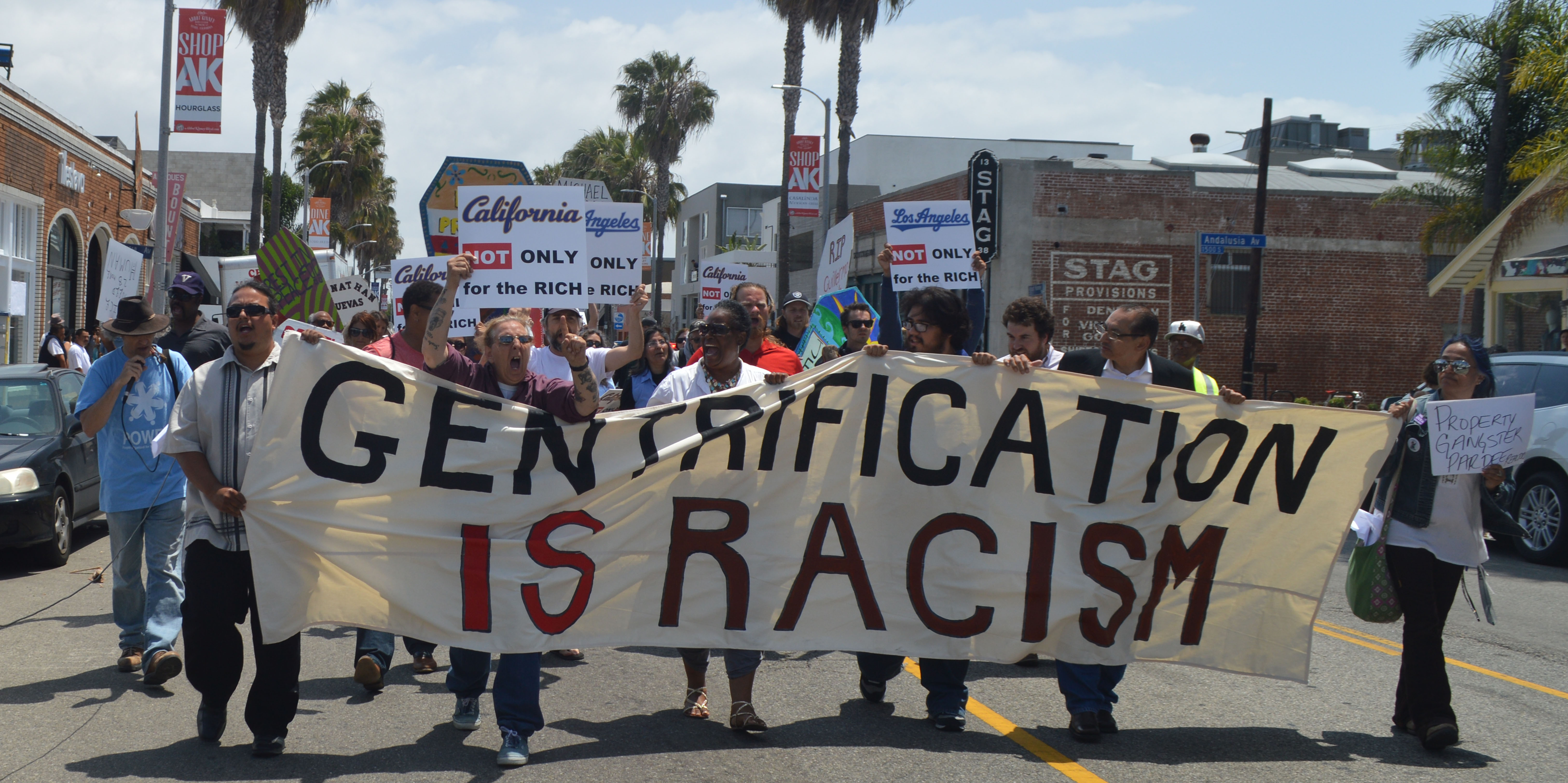LISTEN TO TLR’S LATEST PODCAST:
by Publius
Gentrification is one of the most high-profile issues in America’s cities. It sits at the intersection of economic theory, culture, class, and racial identity. It’s been protested, lampooned, and protested some more. Gentrification is also a historical irony; the opposite of the white flight of the mid-twentieth century. Formerly working class and black neighborhoods in America’s largest cities are changing, and some people are not exactly enthused.
What is Gentrification?
To put it simply, gentrification is the process of a poor or working class neighborhood becoming middle or upper class. This process allegedly results in rising rental prices due to increased demand. According to critics, previous residents are forced to leave, and new businesses moving into the area to serve the new consumer base.
In addition to economics, gentrification has a way of reviving racial tensions. It generally involves young, educated, middle-class white people moving into neighborhoods whose residents are mostly black and working class. This influx of people and capital changes neighborhoods.Many are comparing gentrification to colonialism.
It is alleged that gentrification is destroying these black neighborhoods and their unique cultures along with it. Rhetoric aside, this argument basically states that the white people don’t belong in their neighborhood because they believe and look different. They’re ruining the neighborhood.
So, is there any truth to all of this? Sort of.
The Basics: Gentrification 101
The most basic economic claim is true. Rents do tend to rise where gentrification occurs. This, however, does not mean that people are being pushed out. It may sound odd, but areas susceptible to gentrification generally have high turnover rates. This means that instead of people being pushed out, those that are already leaving are being replaced by people with more income.
In fact, gentrification may slow the rate of transience. There are two main explanations for this. The first is that people are moving less within neighborhoods because there aren’t any cheaper options there may have otherwise been. The second is that people are moving less because they like the neighborhood more. Gentrification, in addition to higher rent, brings more commerce, and services. However, neighborhoods also must suffer an overabundance of hipsters as well.
Research also shows that Gentrification reduces crime rates. Neighborhoods that gentrify see significant decreases in violent crime. This view is supported by criminological theories such as the Social Disorganization Theory.
Trying to Stop Gentrification?
Basic factors like rent and crime don’t tell the whole story, unfortunately. Gentrification also carries a strong racial component. This is due to the gentrifiers often being predominantly white and middle class moving into neighborhoods that are black and working class. As previously stated, this racial and class divide has led many to label the gentrifies as wannabe colonizers attempting to destroy a neighborhood’s culture. Is this true?
Yes, it most certainly is. Gentrification changes a neighborhood, both its residents and culture. It is not a fast process, gentrification takes decades to really change places, but changes will occur. While many may argue that this change is not objectively bad, that does not hold much sway with many residents. Many people like their neighborhoods and don’t need any Starbucks guzzling hipsters to ruin it.
This opposition has communities attempting to find ways to stem the tide. As mentioned already, there have been plenty of protests. Documentaries have also been made, and speeches given. There have even been violent campaigns to deter gentrification. None of them have worked. Pseudo-socialist and racial propaganda seem to be no match for market forces and peoples’ individual interests.
People don’t seem to respond well to being called racist and classist oppressors. Who knew?
Government Response
The governmental responses to gentrification and opposition to it have been mixed across the country. While it may disappoint many activists, local governments cannot ban those who are wealthy or white from buying and renting in certain areas. That’s a fight that was lost quite a while ago. Instead, many local governments are attempting to control housing costs and empower residents to have greater control over new development. Per usual, however, these efforts often do more harm than good.
The poster child for these ill-fated efforts is San Fransisco. The progressive-mecca seems to find every possible counterproductive policy to throw at the problem. Among the most disastrous is rent control. Rent control policies have ensured that developers will avoid building rental units and that non-controlled properties have astronomical prices.
San Fransisco has also seen fit to empower individuals known as NIMBYs (Not in my back yard). These individuals seek to halt development for a bevy reasons. Usually, it involves the ‘culture’ of a neighborhood or incredibly pedantic concerns. Regardless of intent, the result is the same: more expensive housing. San Fransisco’s city government and others have empowered these NIMBYs by allowing them to easily throw wrenches in development plans and proposals.
These government interventions have helped make San Fransico home to the world’s highest rental prices in the world. While this is definitely spurred in part by the tech boom and population rise in the city, government policy has mad a hard situation even harder.
What Does This All Mean?
Gentrification is undoubtedly a hard topic to deal with. Like all market shifts, it does have its losers. Many in gentrified neighborhoods feel left behind and forced to move other places or adapt to changes. Is this process fair to them? No, not really. On the other side of the coin, however, it is not fair to penalize the gentrifiers either. They have just as much right to live in a neighborhood as the previous residents. Either way, somebody is not going to be happy.
With this in mind, gentrification is good for cities in the long term, bringing capital and young educated folks to urban areas in desperate need of both. It increases the theft tax base of cities and takes stress off public services caused by concentrated poverty. It also brings in monied consumers who can support local businesses that couldn’t otherwise survive.
Efforts to stop gentrification inevitably are reduced to racial/class shaming and counterproductive government policy. The best thing for these neighborhoods and cities is to allow the process to occur and let developers meet the increased housing demands that will result. The free market is the best way, the only way, to really help these cities.





3 comments
… [Trackback]
[…] Informations on that Topic: thelibertarianrepublic.com/understanding-gentrification-and-governments-response/ […]
… [Trackback]
[…] Find More Information here to that Topic: thelibertarianrepublic.com/understanding-gentrification-and-governments-response/ […]
… [Trackback]
[…] Find More on that Topic: thelibertarianrepublic.com/understanding-gentrification-and-governments-response/ […]